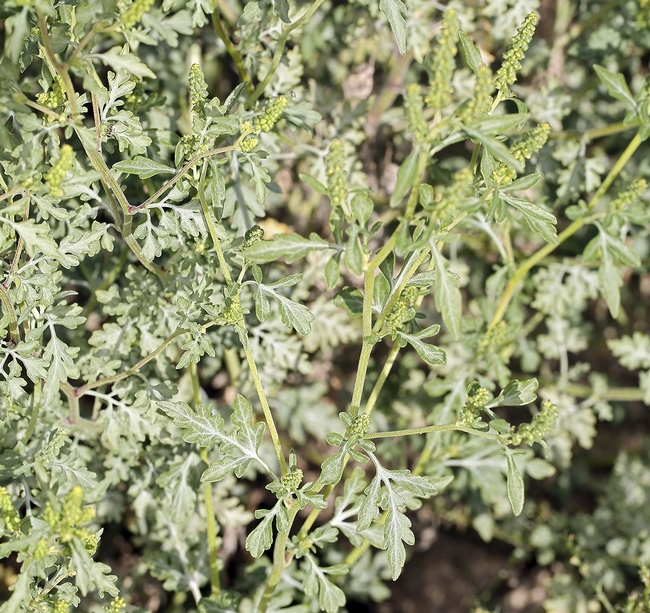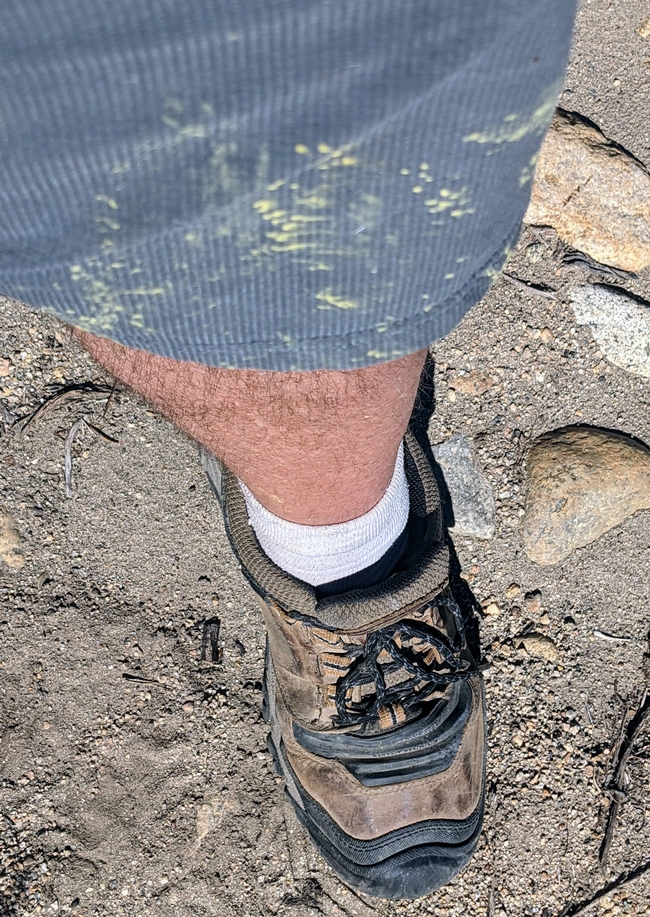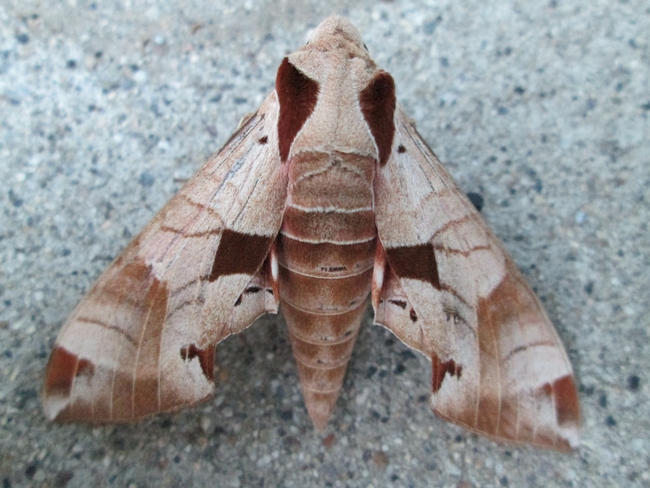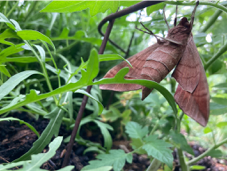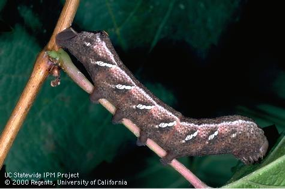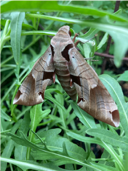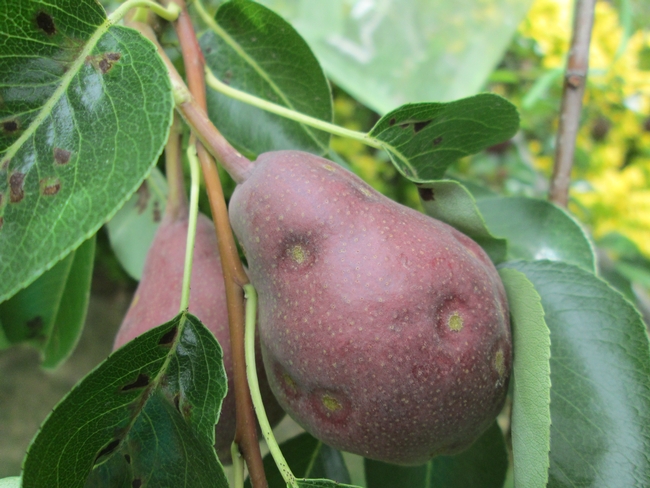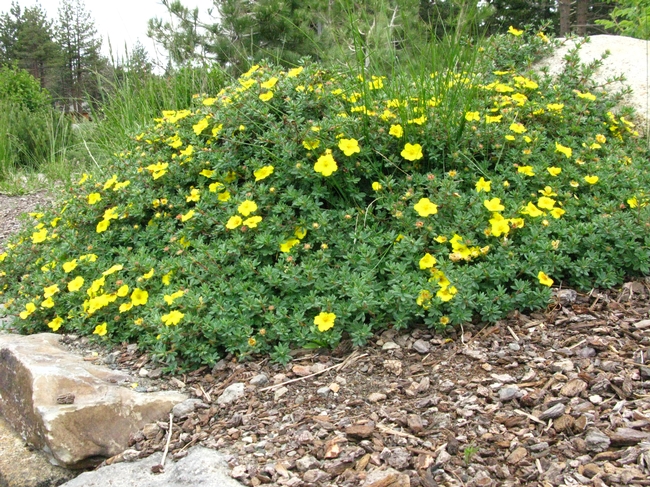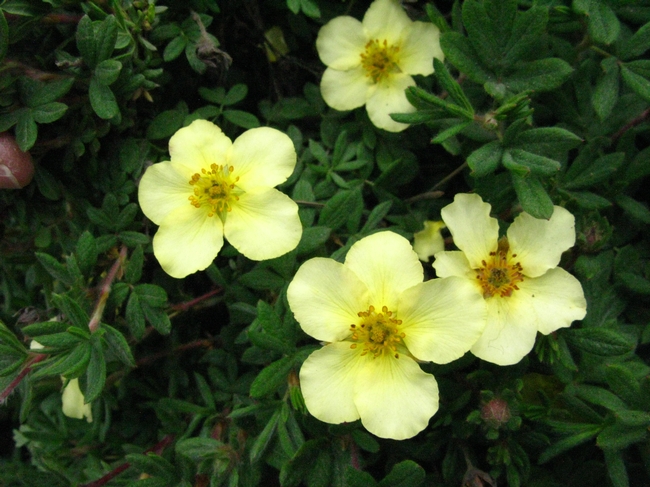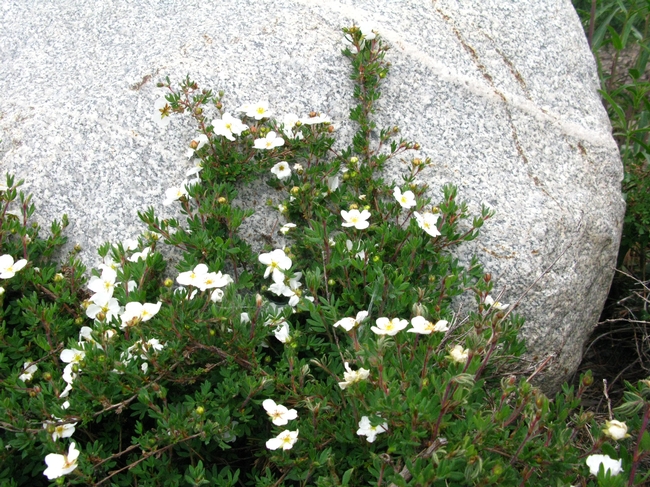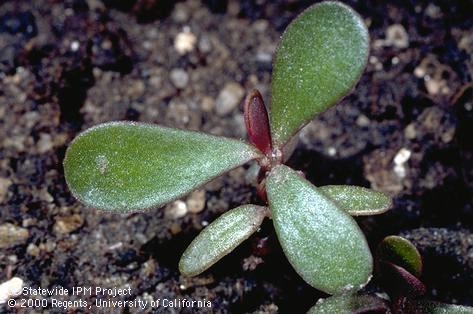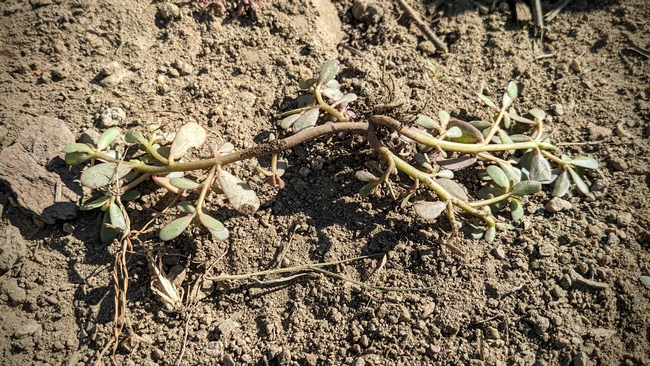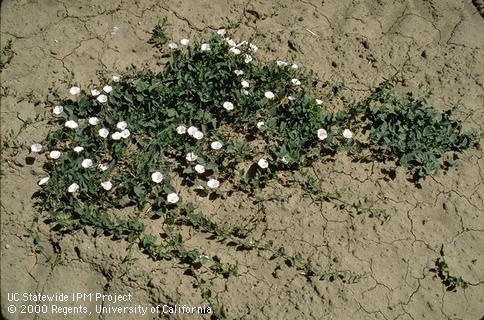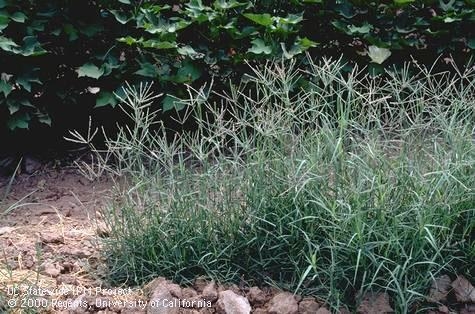- Author: Dustin W Blakey
Like many of you, I have been a walking sneeze these past couple weeks. There is a fair chance that I'm single-handedly keeping the antihistamine industry afloat! We're past the elms, grasses and pine pollen season so what's going on?
Although in late summer we like to blame rabbitbrush and goldenrod for our allergy woes, the most likely culprit is ragweed. With all the rain this year, the ragweed is plentiful. It thrives on disturbed ground which flooding has created more of beyond the usual roads and trails that it's usually found near. I've seen it this year in places I seldom encounter any.
Ragweeds are found across the USA, but California has its own set of species. There are several species in Inyo and Mono counties, but the one I'm seeing most right now appears to be Ambrosia anthicarpa: annual bursage.
All ragweeds are prolific pollen producers. A quick brush against them near Horton Creek covered me (and my dog) in pollen. Sneezes soon followed.
At this point, ragweed isn't really controllable. It can be managed earlier in the season with herbicides, but the plants are too far developed for that option. Even if you did manage to control yours, the immense population this year will still release enough pollen to make life difficult for another month.
My advice now is to try to avoid getting close to it and try to keep your pets out of it if they're the type that likes to snuggle up to you. If you're out hiking around and see some growing, I'd suggest moving to another spot.
- Author: Patricia Barni
- Author: Alison Collin
As winter turned into spring and the 'Bartlett' pear tree flowered and leafed out, I celebrated my great gardening success. In fact I was jubilant because it looked as though I had finally won the battle against fire blight! For the first time in four years there were none of the telltale signs of this disease - no blackened leaves or "shepherd's crook" stem tips. For a time it looked as though I would never win, but careful pruning and rigorous attention to hygiene had finally paid off.
My only problem now was how to restore the tree into something that would justify my title of Master Gardener.
The tree had put on a lot of growth last year, and in typical pear fashion, all the new growth was fastigiate, shooting skywards with nothing but weakly attached, narrow crotch angles around the trunk and vertical stems emanating further out from the old, lateral branches. It looked a complete mess, and in spite of studying this problem over several months I had no idea how to tackle it. I became paralyzed with indecision and did nothing.
This spring, the tree was covered in flowers and set a good crop, which for once were not damaged with frost rings, and there was still no sign of fire blight. However, as I thinned the fruits I noticed that some of them were distorted, and a few of the leaves were developing blisters and brown spots suggesting that the tree had a new problem: pear blister mites.
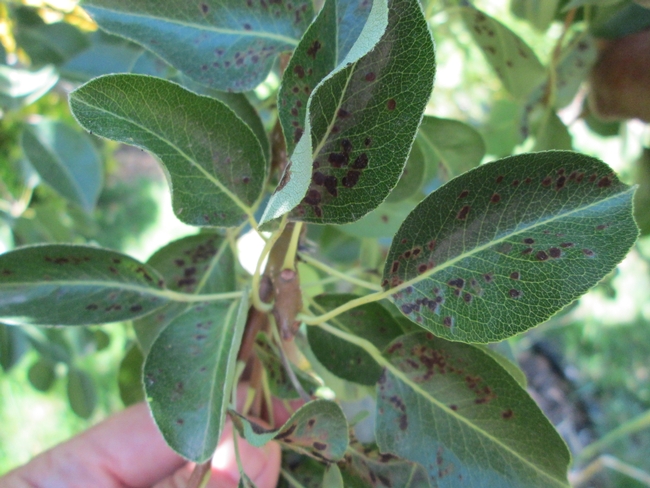
By this time of year there was no hope of getting any control by spraying, so my next chance will be after harvest, in October or November when the mites travel away from the leaves and take up residence in the developing buds for the winter where they are again protected from the effects of sprays.
There is a small window of opportunity during this migration, and I will check for mite activity by sampling buds at various intervals and looking at them under a strong magnifying lens in order to monitor mite activity, and then spray to control. In order to comply with organic growing principles the chief methods of control available are either oil sprays or sulfur sprays. Some pears such as comice or Anjou are damaged by sulphur which cuts down on options for those varieties.
I think that I would rather deal with fire blight!
Maybe next I will be luckier.
For more information:
- https://ipm.ucanr.edu/agriculture/pear/pearleaf-blister-mite/
- https://ipm.ucanr.edu/agriculture/pear/dormant-to-delayed-dormant-sampling/
- Author: Carmen Kappos
If you want an easy care, hardy addition to your garden, then shrubby cinquefoil is great to consider. It's a tough garden plant that keeps producing its carefree flowers all summer long. The species name was updated to Dasiflora fruticosa, but it is still sold under an older name of Potentilla fruticosa. A native plant to northern United States and Canada as well as Europe and northern Asia, it's well-loved with many cultivated varieties. Shrubby cinquefoil is easy to grow, even in poor soil. For high altitude gardens it tolerates very cold temperatures and handles crushing snow well.
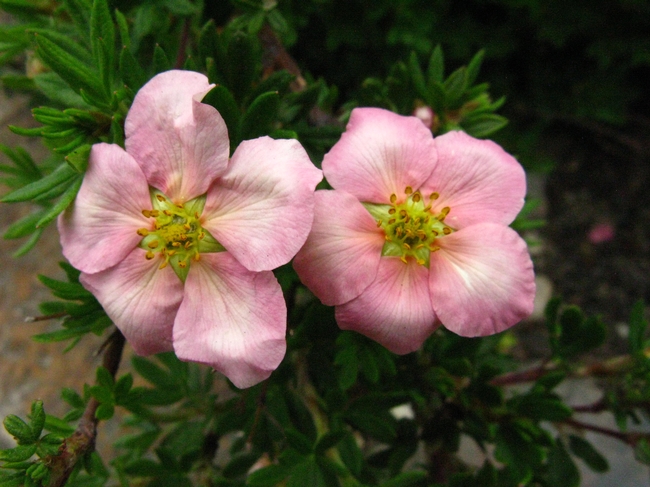
Here's a list of features for this hardy shrub that works well in borders, as a foundation plant, or in mass plantings.
Plant Facts:
- USDA Hardiness Zone 3 – 7
- Once established is considered “water wise”
- Grows well in poor soil
- Low maintenance
- Medium fire resistance
- Easy to grow
- Few pest problems
- 3' tall to 6' wide, can be pruned to height
- Rounded growth habit
- Dark green, soft pinnate leaves
- Deciduous
- Cold hardiness
- Handles crushing snow
- Long summer blooming
- Non-toxic to dogs and cats
- Cultivated plant flower color choices: bright yellow, light yellow, white, cream, apricot, coral, pink or yellow tinged with orange.
Four different flower color specimens may be seen at the pocket park at the base of the Mammoth Lakes entrance sign. There you can see bright yellow blooms, light yellow blooms, pink blooms and white blooms during the summer months. To visit, park in the lot for the Police Department and courthouse and walk over to the small water-wise demonstration garden created by the local water district.
- Author: Dustin Blakey
I control most of my garden weeds by hoeing and pulling. This morning I was doing a quick once-over with the hoe before work when I was inspired by the abundance of purslane present in the garden to write a quick post on hoeing. Maybe we'll call it Advanced Hoeing? (Done!)
If you've read Alison Collin's previous article on hoes you should be familiar with these tools. I primarily use a hula hoe.*
If you look at how a hula hoe works, it kills weeds by cutting the top of the plant off of its roots. I have very good luck controlling annual grasses, lambsquarters, and Russian thistle. Two weeds that the hoe doesn't work well on are taboose (AKA yellow nutsedge) and purslane.
The lack of control by hoeing taboose makes sense. It has small nutlets that regrow new plants if the top is cut off. I have to dig those out. Taboose control is mostly just a factor of how much effort I want to put into the task. I mostly just live with it, digging a few out when I'm feeling a surge of ambition.
More interesting is the issue with purslane. Purslane is an annual with a fleshy taproot. You would think that hoeing would be very effective in controlling it. But it isn't. If you're not careful, hoeing can just spread it around.
I started this summer with just a little bit of purslane in the garden. Mostly I was fighting grasses, and being my usual lazy self, just hula-hoed up everything and moved on to other tasks. I knew that was probably a bad idea, but: laziness. I ended up spreading purslane all over the place!
Here's the problem: purslane is succulent and easily re-roots. (In fact, you can propagate it that way on purpose!) My hula hoe basically just chopped it up and spread it around. If it's a tiny plant, you may get some control by cultivation or hoeing, but soon thereafter it's no longer effective. All I did was transplant it!
If you're using a hoe, there are some extra steps you need to take with weeds like this that can both tolerate drought stress and have the potential to grow new roots.
First, make sure that the surface of the ground is going to be dry during the heat of the day. Adjust your watering schedule if needed. Next, when you hoe (or pull) purslane, make sure the whole plant ends up upside-down. It will not root easily if it is inverted, and the dry, hot conditions will hopefully kill it quickly. If you really want to be sure you're not going to spread it around, you should rake it out after hoeing. That's good advice for any weeds. Lazy me just leaves it if it's not too giant.
There are two other common weeds that you should also handle differently when hoeing. Field bindweed and bermudagrass tend to spread if chopped up and spread around. These need to be either dug out thoroughly and removed or controlled using other methods. See the pictures below to learn to identify these.
You are better off not jumping in and hoeing these two baddies since they are easy to spread. Consult UC IPM for control advice first.
If you have more questions on controlling weeds in the garden, or you're just a hoeing enthusiast who would like to swap stories with like-minded individuals, contact our Master Gardener helpline at immg@ucanr.edu.
_____
* It's probably better to call it something generic like a stirrup or scuffle hoe, but those neural connections fused in my brain decades ago, so I'm calling it a hula hoe. Whatever you call it, it's a great garden tool.


